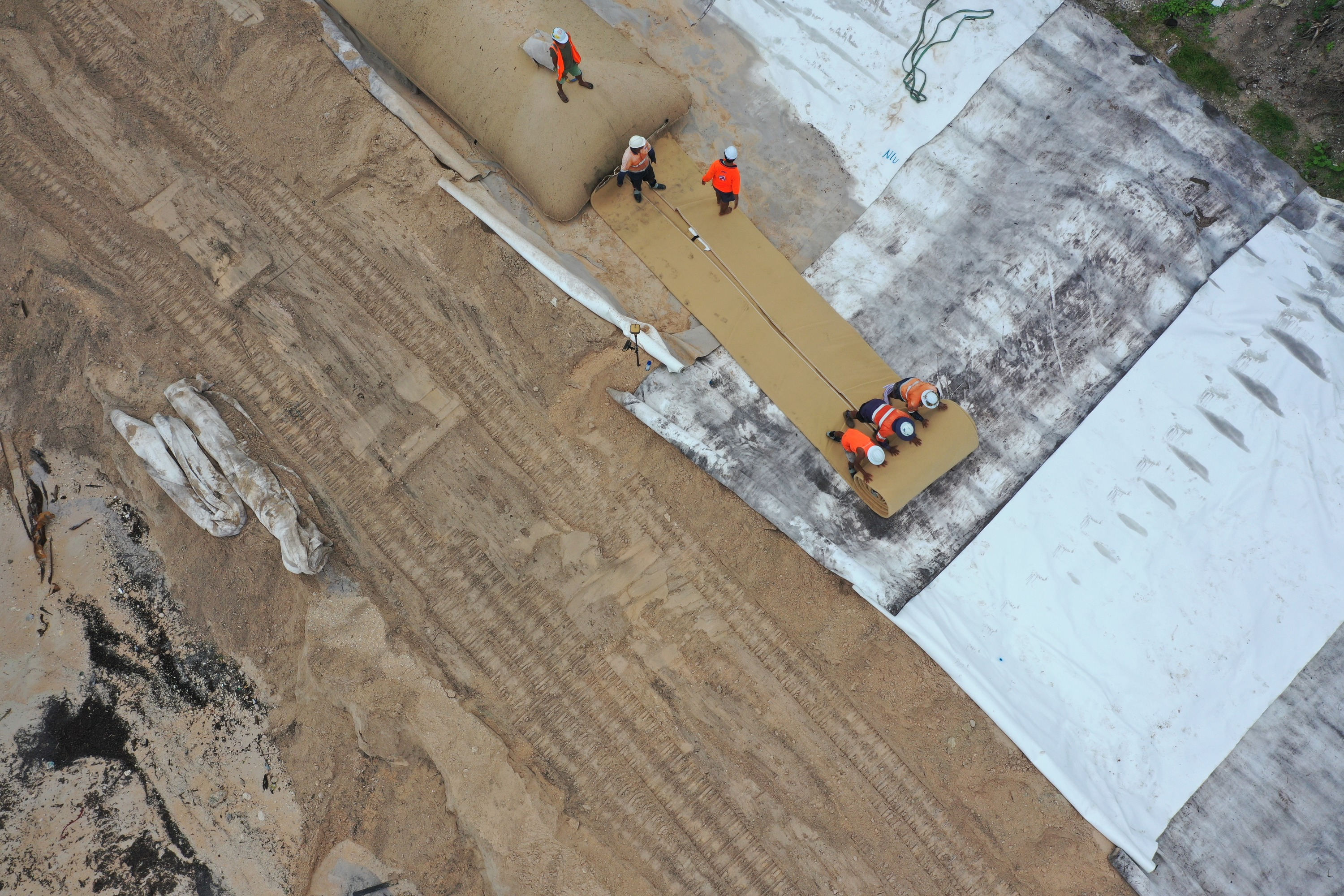Engineering Resilience: Protecting Tuvalu’s Nanumea Island from Sea Level Rise
September 5, 2024

Featuring the church, on the island of Nanumea.
Nanumea, the fourth largest and most remote island of Tuvalu, is located 650 kilometers north of the nation’s capital. The outer island’s white shores are home to a population of 485 people and around 180 houses, only accessible to the public by ship. On average, one ship a month makes the 24-hour voyage to the island, carrying vital supplies to stock around 12 small stores with basic home and food necessities.
The island has two major constructed landmarks: a 2.5-kilometer airstrip and a church building. The airstrip was built during World War II and is in good condition.
The most visible building dominating the landscape of Nanumea is the church, which was built before World War II by a local man named “Valo” and is a prominent and cherished structure in the community.
Public services on the island include a community hall, hospital, powerhouse, fisheries office, and office for the elders committee known as the “Kaupule,” which comprises six staff and six members providing service delivery to the local population. There is also an agriculture station, pre-school and primary school providing education until grade eight. Power is mainly provided by a solar-backed fuel generator, and the internet is expected to arrive soon.
The livelihood of people on the island depends mostly on livestock rearing of pigs and chickens and fishing. Farming is mainly done on the nearby Island of Lakena, which is accessible by boat. “Pulaka”, which is the staple food grown on the Island, has been affected by saltwater intrusion into gardens during marine flooding.

Aerial view of Tuvalu’s Nanumea Island, with Berm Top Barriers visible on the left shore.
Many of Nanumea’s buildings and residential housing are along the shorelines, exposed to cyclones. The most recent cyclones reported were Tropical Cyclones Pam in 2015 and Tino in 2020, causing significant damage in Nanumea.
To mitigate future cyclone damage, the Tuvalu Coastal Adaptation Project, funded by the Green Climate Fund (GCF), with additional contributions from Australia's Department of Foreign Affairs and Trade (DFAT) and co-financing from the Government of Tuvalu, is being implemented by the United Nations Development Programme (UNDP) as an Accredited Entity for GCF funding in partnership with the Government of Tuvalu and Hall Contracting, in close consultation with communities.
The new infrastructure includes construction of 1,330-meters of “Berm Top Barriers” which elevate the natural storm berm along the foreshore by an extra 1.5 – 2 meters, making flooding during storms far less likely to over top the shore or penetrate inland into village areas and farmland, to safeguard food security and crops like “pulaka”.
Hall Contracting is also installing a 177-meter Seabee Wall, with its hexagon, bee-hive-shaped design to take the energy out of rising waves while maintaining wall strength. Seven Reef-Top Barriers are also being installed, each 25 meters long, built into the shore reef to slow down and break the force of the waves. The design of the project has been informed through a detailed feasibility study and evidence gathered from lessons learned and close community and government engagement.
The work is currently 70 percent complete.

Construction work continues on Nanumea Island, to complete the Berm Top Barriers.
Toai V. Tepou, a member of the Nanumea Kaupule, emphasized that the project considers local context and technical expertise. “The protection of the church is very important for us and the work done for the protection of church is much appreciated as the previous measures were not successful as no proper design and feasibility was done,” he explained.
“The TCAP project is the third biggest construction project in the history of Nanumea after the construction of church and airstrip during World War II. The Kaupule is fully consulted, informed and involved in the project and providing the required support to the project.”

Rolling out geo-textile bags for construction of Berm Top Barriers on Nanumea Island
Upon completion, the Kaupule will take responsibility for the operation and maintenance of the completed infrastructure with the support from local government and a designated minister from Nanumea. “The provision of sand free of cost for the construction work is an example of the Kaupule and community interest and ownership of the project,” added Tepou. He said that the Kaupule and community appreciate the job and training opportunities provided. The community has also leased land for establishing a camp and storage points for equipment and material.
Uila Koliata, originally from Nukufetau Island and recently worked as site supervisor with Hall Contracting in Nanumea, shares his confidence in the project.
He said that, due to his involvement in similar works carried out in Tuvalu by Hall Contracting and his experience in sea wall construction, he is convinced about the importance of this work and has observed the direct impact of such interventions in his home island of Nukufetau.
His wife, Telesa Koliata, who also worked for Hall Contracting, shared that she learned about time management. The couple are now taking on new opportunities in Australia. “The children said that they will miss the company of their friends, especially swimming!” said Telesa Koliata.

 Locations
Locations



